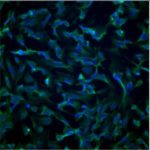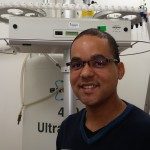Link to DOI – 10.1055/a-2212-7704
Synlett 2024, 35, 677-683
Decorating nucleic acids with boronic acids can extend the usefulness of oligonucleotide-based tools to the development of medical imaging agents, the promotion of binding of aptamers to markedly more challenging targets, or the detection of (poly)saccharides. However, due to the hygroscopic nature and high intrinsic reactivity of boronic acids, protocols for their introduction into nucleic acids are scarce. Here, we have explored various synthetic routes for the crafting of nucleoside triphosphates equipped with phenylboronic acids. Strain-promoted azide–alkyne cycloaddition appears to be the method of choice for this purpose and it enabled us to prepare a modified nucleotide. Enzymatic DNA synthesis permitted the introduction of up to thirteen boronic acid residues in oligonucleotides, which bodes well for its extension to SELEX and related methods of in vitro selection of functional nucleic acids.



